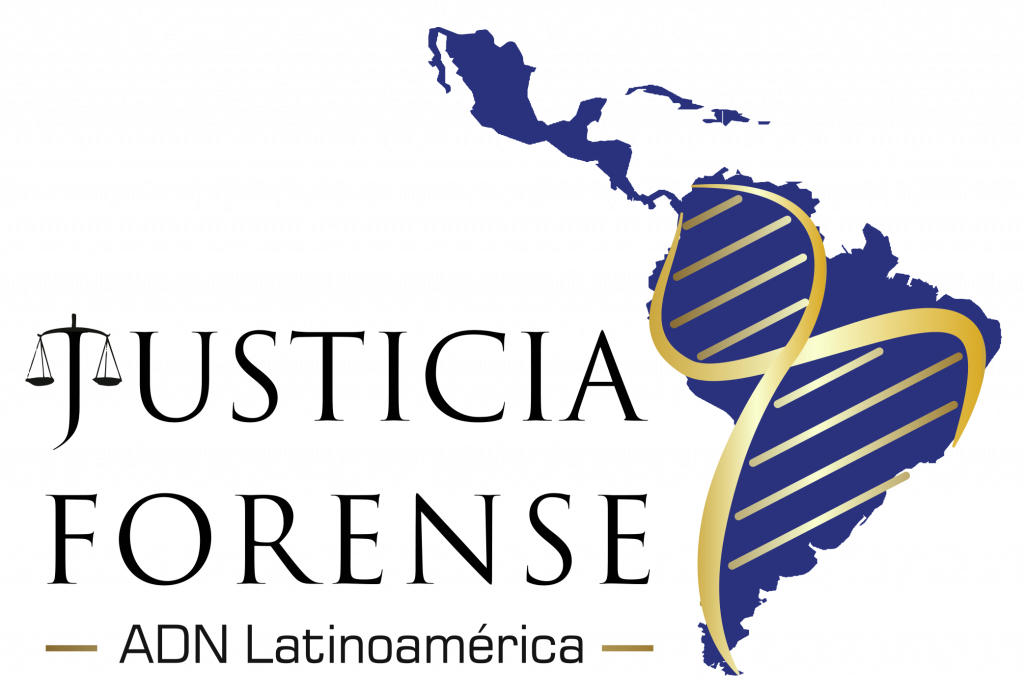
We are a campaign created for Latin America led by experts in the development of criminal policy, legislation, laws and protocols for forensic DNA databases. We work closely with government officials, forensic DNA laboratories, criminal investigation institutions and the DNA industry.
1. Increase successful criminal prosecution in Latin America by providing technical advice, training, education, recommendations and expertise related to the analysis of criminal genetic fingerprinting and the establishment and operation of DNA databases.
2. Advise and support government officials, forensic laboratories, justice entities, criminal policy and the rule of law, by providing legal and public policy recommendations related to the establishment and operation of DNA databases as tools for criminal investigation.
3. Provide ad hoc support and services for the implementation of inter-institutional cooperation in Latin America, promoting legislative and scientific projects that reduce impunity rates.
Ensuring justice for victims of crime is a central function of all types of governments around the world, and this is certainly no less true in Latin America. Solving crime, preventing crime, dismantling organized criminal groups and exonerating the innocent is, and will always be, a service of paramount importance to the Latin American region.
It is with this background that we are pleased to announce the regional launch of a campaign called Justicia Forense – DNA Latin America. Our purpose is to act as coordinators for all interested parties, public and private, governmental and from society, who wish to promote the responsible use of criminal DNA databases as an important tool to help reduce impunity for victims of crime. The concept of these databases is easy to understand: when a criminal is arrested or convicted of a crime eligible for inclusion in the DNA database, the DNA sample is collected and sent to the forensic laboratory for analysis. The resulting DNA profile (known as the genetic fingerprinting) is entered into a secure offender DNA database. From that date, if the person commits another crime and leaves DNA at the crime scene or in traces of the crime, the evidence can be compared to the criminal DNA database to verify if there is a match. This process allows investigators to identify a criminal even when no other evidence is available. It also provides investigators an immediate opportunity to solve old unsolved crimes where a suspect has never been identified or identify missing people and provide closure to their loved ones.
Several Latin American countries have introduced DNA databases in recent years, some for humanitarian purposes and others for criminal investigation. Others are now beginning to consider their implementation as more and more empirical evidence demonstrates their effectiveness and importance for criminal policy worldwide. Fifty-nine countries have national criminal DNA database programs, but Latin America is underrepresented as a region, where only six countries having criminal DNA databases. In some cases, the functioning databases in those countries are not national in scope, but rather certain provinces have moved ahead with local laws and policies. In others, the crimes eligible for profiling of offenders are not broad enough to produce a high level of matches with crime scene DNA evidence. However, our vision is to encourage established DNA databases to be followed by others, and to motivate the creation of a campaign for the development of criminal DNA databases where all countries can benefit from this more modern, impartial and reliable evidence. Furthermore, it is time to add genetic fingerprinting along with traditional fingerprints as an identification tool.
The creation and management of DNA databases of criminals is predominantly the result of laws passed by national legislatures. This allows a country’s legislators to clearly and transparently identify the specific technical requirements for managing databases, clarifies the respective institutional responsibilities and ensures a healthy and broad debate to define which crimes should trigger the collection and storage of an offender’s DNA profile. Without such laws, states have fewer tools available to combat violent crime, organized crime and sexual crimes, and investigations can cost more money, take much longer and go unsolved.
In Latin America, each country has professional DNA laboratories. They are usually located in police agencies, attorney general’s offices or national institutes of forensic sciences and legal medicine. They are responsibly managed and staffed by properly trained experts who we know as we have had the honor of visiting many. To do their job thoroughly and serve the justice system as efficiently as possible, including fighting cross-border crime throughout Latin America, more countries should adopt robust databases to accompany increasingly sophisticated crime scene investigations. Many countries around the world have been operating criminal DNA databases for over two decades, for example Europe, the United States, Australia/New Zealand and Asia, where DNA is collected from everyone arrested and/or charged with a crime and compared to the DNA database of samples of unsolved crimes, in exactly the same way that human fingerprints have been used for over a century to identify the presence of a criminal at a crime scene. DNA is a genetic fingerprint, unique for everyone, but much more powerful, since it can be traced from a lock of hair, a drop of blood, a drop of sweat or a flake of dandruff, among many other human tissues and biological substances that we are eliminating all the time. Cases dating back more than three decades have been solved by re-examining clothing, ropes, weapons and other evidence in which latent criminal DNA has been found in microscopic amounts. The criminal’s genetic fingerprinting, untouched by time, was waiting to be discovered by the modern DNA extraction techniques that forensic scientists have developed around the world.
Countries that use these criminal databases experience astonishing results in identifying and convicting criminals who would otherwise go undetected. In the United States, more than 20 million offender samples have been uploaded to its DNA database, and England’s DNA database provides more than 1,700 DNA matches per week. Countries with advanced DNA database systems achieve DNA database match rates of 40-60%. That means that for every 10 unsolved crimes that enter the database, 4-6 will immediately find their way to the genetic fingerprinting of a criminal suspect.
Imagine the number of crimes that can be solved in complex criminal investigations if the Latin American region duplicates the success experienced in other parts of the world. Furthermore, imagine how many crimes can be prevented if criminals can be quickly identified through the criminal DNA database and removed from the community so that they cannot continue to harm society and abuse vulnerable groups such as women and children. Criminal DNA databases are the most powerful tool to combat crime. Justicia Forense – DNA Latin America is proud and committed to helping develop new database laws, operational policies and investigative procedures for governments and the justice sector in the region. Our goal is for Latin American nations to join the growing list of countries around the world that are using the DNA database to make their communities safer. Furthermore, we must not ignore the power of DNA to exonerate the innocent and prevent crime. DNA testing and databases quickly pinpoint the real criminal and exonerate those falsely or maliciously accused. DNA databases also help reduce recidivism: offenders profiled and entered into the database often think twice about committing future crimes, knowing that their DNA fingerprinting is identifiable from the minimal amount of evidence they can leave at the crime scene. Finally, it is also a powerful tool to prevent and detect possible crimes committed by agents of a State such as police forces or others, since most of the laws passed include procedures and obligations to take DNA profiles from investigators and other justice employees. This is part of the necessary process of eliminating DNA profiles from those officials who attend crime scene examinations.
The interactive situational map on our website identifies the current state of the region in terms of criminal DNA databases and describes the laws, policies and institutions involved in achieving this important and necessary change. Many countries have begun recruiting and training brilliant forensic scientists capable of processing DNA and adding DNA profiles from both criminals and crime scenes to databases. Its work and the importance of genetic fingerprinting should be placed at the forefront of modern criminal policy in Latin America.
Recent achievements and advances should be applauded, and justice and security agencies that are still in the development stages should be given guidance and assistance in building these databases as part of their contract with Latin American citizens to achieve secure livelihoods. We must not rest, but rather encourage laws and protocols that allow for faster DNA processing and efficient justice. All Latin American countries should have this public debate and work to build a comprehensive criminal DNA database program. Over time we recommend that these databases should be able to share DNA profiles across country borders, through agencies such as Interpol, to help solve crimes committed in one Latin American country by a criminal from another Latin American nation. Crime is everywhere on our globalized planet and criminals are agile, crossing national borders or transcending continents to commit serious and damaging crimes. Only with national criminal DNA database programs throughout the Latin American region will we be able to harness the full power of criminal DNA databases. We therefore call upon fellow experts, academics, technicians, scientists, politicians and the criminal justice community to support victims, reduce impunity, decrease violent crime and take steps to implement this criminal policy.

Justicia Forense: ADN Latinoamérica está conformado por expertos en el desarrollo de política criminal, legislación y protocolos para bases de datos forenses de ADN .
Justicia Forense ADN Latinoamerica
es una marca de Gordon Thomas Honeywell DNA

Rapid DNA
3D Crime Scene Reconstruction



Cómo usan las fuerzas de la ley Rapid DNA, para desarrollar líneas investigativas y exonerar a inocentes en 90 minutos

Cómo utilizan las fuerzas del orden 3D Crime Scene Reconstruction para modernizar las investigaciones y los resultados judiciales.

Estrategias de financiamiento para las fuerzas del orden locales

Anfitrión
La esperada presentación anual de GTH DNA “Hallazgo Forense del Año” vuelve esta temporada con más historias de investigación emocionantes de todo el mundo. Podrá verla en línea el próximo 14 de mayo de 2024, durante la Conferencia Virtual de Soluciones de Identificación Humana (HIDS). Como siempre, el programa de este año revisó varios casos interesantes para recopilar y mostrar los mejores hallazgos forenses que utilizaron bases de datos de ADN de maneras únicas y eficaces. Este programa sigue dando a conocer a escala mundial el increíble valor de las bases de datos sobre ADN para resolver y prevenir delitos, identificar a personas desaparecidas y exonerar a inocentes.



Legislación relacionada con ADN
Proyecto de Ley 8 de noviembre 2012: Descargar «Propuesta legislativa para crear la base de datos de ADN en Bolivia comenzó con el proyecto de ley llamado «Boliviano» Sistema de Identificación Criminal (SIBIC), con el objetivo de aplicar la biometría autenticación y tecnologías de la información, para el registro y determinación de la identidad de los delincuentes. Esta propuesta fue presentada en la legislatura 2015-2016 con número 0682015-16 y en la legislatura 2016-2017 con número 028/201617.
Bases de datos de ADN existentes
Servicio Nacional de Registro de huellas genéticas y dactilares administrado por el Instituto de Investigaciones Forenses.
LEY DEL BANCO DE PERFILES GENÉTICOS DEL ESTADO PLURINACIONAL DE BOLIVIA
Ley 1398 de 2018 / Proyecto de Ley Nº 05630, 18 abril 2000. ADN: Ley de Base y Banco de Datos.
(Congreso de la República del Perú – Enlace)
Bases de datos de ADN existentes
Base de datos de desaparecidos Liderado por Policía Nacional.